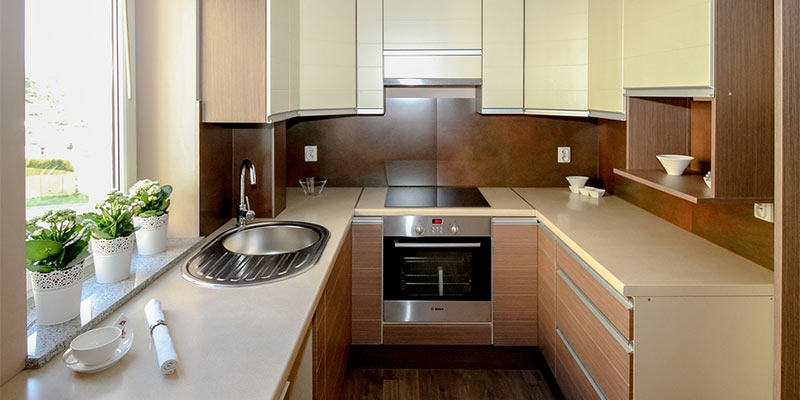
Has there ever been a person who complained that they had too much kitchen space? Probably not. Even in the most spacious kitchens, it’s likely that there are spots that just don’t work as well as they should. After all, we don’t all use kitchens in the same way.
From committed bakers to those who just enjoy a quick and easy meal for one, there are ideas to help you get the most out of your small kitchen. Here’s how to go about it.
Interview Yourself
The next few trips into your kitchen, pretend you’re being profiled by your favorite magazine. Think about how they’d describe what you’re doing, and you’ll be able to identify your needs.
If you’re doing a lot of pivoting between locations, constantly trying to find a spot to put down your cookware, or shuffling through your cabinets to reach what you need, you need to look at some basic layout and storage changes.
If you notice that you never use one cabinet, but that the other is a nightmare of shifting cans and glassware, it’s time to rethink your priorities. Jot down some notes about what continually frustrates you, and what you’re doing the most often in your kitchen.
Identify your working triangle
This is a simple idea that a lot of people don’t know about. It’s actually been around since the 1940’s – back when kitchens were smaller, and good design was important.
The work triangle, quite simply, is based around the items you use most in the kitchen: The sink, the range, and the refrigerator. Think about how well it works in your own space. Is it easy to move from the refrigerator to the sink? Even if your cooking implement of choice is the microwave, consider how it works into the equation.
Your kitchen triangle should allow for free movement between the points, and keep your steps to an efficient minimum. Even if you can’t relocate your sink, refrigerator, or range, work to keep the pathways clear and avoid obstructions.
Consider Adding Some Easy Shelving
There’s always wasted space in a kitchen, and adding in some shelves can work miracles. Common spots in need of some good shelf help are over the sink, just under cabinets, and inside pantries.
One overlooked spot is next to the sink. Wouldn’t it be great to regain some counter space, and have a spot to place a frequently used water glass, your rings, fresh fruit, or an extra dish towel? Slip a shelf in under the cabinets, and you double your space!
Another great spot for a shelf is under the cabinet next to the range. It’s a convenient way to store away frequently used spices, your favorite cookbook, or the dry ingredients you’ll be using to cook with later.
Contemplate Your “Landing Zones”
This is another kitchen design concept that needs to be better known. Counter space is usually at a premium in small kitchens. The most critical times you’ll need it are when you’re preparing food.
When you were thinking about your daily kitchen use, did you imagine where you were setting items down as you used them? This is a common issue. You need to have space available for putting down hot pots, plates, ingredients, and containers.
Take a hard look at what you need to do to make sure your landing zones are kept open. Do you need to put the toaster in a different location, or put it away entirely? Does a good part of your counter end up as the storage space for your mail, purse, laptop or papers? Now is the time to look at moving these items up off the countertop, or out of the room. Having an open counter space is one of the best gifts you can give yourself in a small kitchen.
Double Up
Kitchen cabinets can come in all different shapes and designs. There’s a lot of wasted vertical space in most kitchen cabinets. Look at yours with a hard eye and a measuring tape in hand, and see if it’s feasible to add another shelf inside, or to purchase one of those wire racks that you can place over your existing items.
For dishware, as an example, it’s easy to keep stacking your dinner plates, salad plates, and bowls higher and higher as you try to use up all the available space. Every meal is a precarious adventure as you shuffle dishes to reach what you need.
With an additional shelf, your frequently used plates can go down, the salad plates can go up, and you can feel your blood pressure drop as you prepare your next meal.
Improving the way your small kitchen works is not as hard as you might think. With a bit of contemplation, some attention to some tried-and-true design basics, and possibly some simple shelving additions, you can quickly improve your kitchen’s efficiency.
About the Author
Ken is a huge fan of living life with a curious mind and a lover of writing. He has always loved the concept of DIY and keeping his life as organized as possible. He is also the enthusiastic content strategist for VancouverWoodworks wood furniture retailer.
